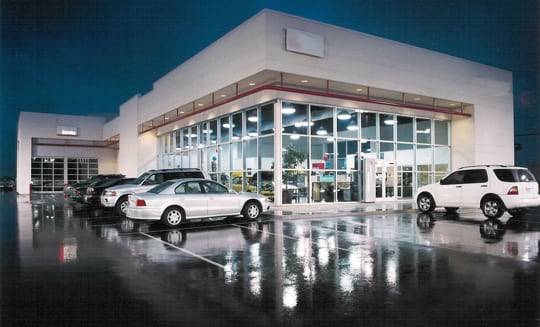
With near-record levels of gross profit per new and used vehicles, how has that affected the product mix of vehicles sold by dealerships? The used-to-new vehicle unit ratio measures the amount of used retail units divided by new retail units. The chart below displays the annual used vehicle gross margin from 2012 through the current year-to-date. With rising profitability over lower volumes, it’s clear why this figure is reaching all-time highs. The year-to-date figure represents a nearly $300/unit increase over the average figure of $2,386 from 2012 through 2019. Low supply leads to higher prices, and dealers have been able to capture their share of this margin. We have previously written about several factors driving this metric including the heightened performance of the used vehicle market in the pandemic due to production shortages and shipment delays for new vehicles as manufacturers have experienced partial shutdowns. Like its new vehicle gross profit counterpart, this metric has also climbed to its highest point in the observed period, currently at $2,678 per unit. Similar to the new vehicles retailed which excludes fleet sales, it should be noted that this metric refers to retail sales only and does not include used vehicles for wholesale. Like new vehicle GPU, this metric refers to the gross margin achieved on the retail sale of a used vehicle and is measured by the retail selling price less the cost paid to acquire the vehicle divided by total units retailed. The chart below displays the annual new vehicle gross margin from 2012 through the current year-to-date. The year-to-date figure represents a nearly $280/unit increase over the average figure of $2,076 from 2012 through 2019. This eclipses a previous high of $2,226 achieved in 2012. Though as noted above, this is not captured in new vehicle gross margin.Īs of October 2020, retail gross profit per new vehicle or new vehicle gross profit per unit (“GPU”) climbed to $2,355 for the average dealerships as defined by NADA. These fixed operations tend to be higher margin, which aids the overall gross margin of the dealership. Dealerships aim to create long-term value by placing more new vehicle units on the road in hopes of the continuing service revenue that results from miles driven. Over time, auto dealers’ new vehicle gross margins have been compressed as a percentage of retail sales price as consumers have become more knowledgeable about manufacturer costs and sticker prices in the information age.

The denominator is the total number of vehicles retailed, or new vehicles sold less fleet sales which, as we’ll discuss in a future post, is subject to different operating environments.

Industry professionals also often refer to this metric as “front-end margin” meaning front of the showroom and not including elements of fixed operations. The numerator is gross profit achieved on the retail sale of new vehicles and is measured by the retail selling price less the cost paid to the manufacturer for the dealership to acquire the vehicle. Three specific metrics in the data have reached their highest level since the data was originally published in 2012: new vehicle retail gross profit per unit, used vehicle retail gross profit per unit, and used-to-new vehicle unit ratio. We previously discussed the use of the NADA dealership profiles as a useful tool to examine timely monthly data based on averages or dealership type. It’s critical for auto dealers to continually analyze all aspects of their business and be ready to capitalize on industry trends. Market conditions vary drastically across all industries and even geographically within the same industry due to local government restrictions. In a strange year of oddities, 2020 has all of us constantly evaluating life’s basic truths.


 0 kommentar(er)
0 kommentar(er)
